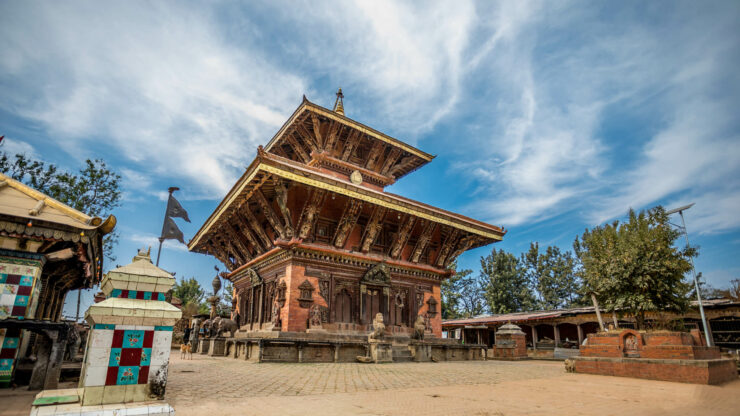
With structures that date as far back as the 4th century, Changu Narayan is perhaps the best-kept secret/ treasure trove of ancient artwork that combines tales from Hindu epics to Nepal’s former royalties.
The double-roofed temple is dedicated to Vishnu in his incarnation as Narayan and is exceptionally beautiful, with intricate roof struts depicting multi-armed Tantric deities.
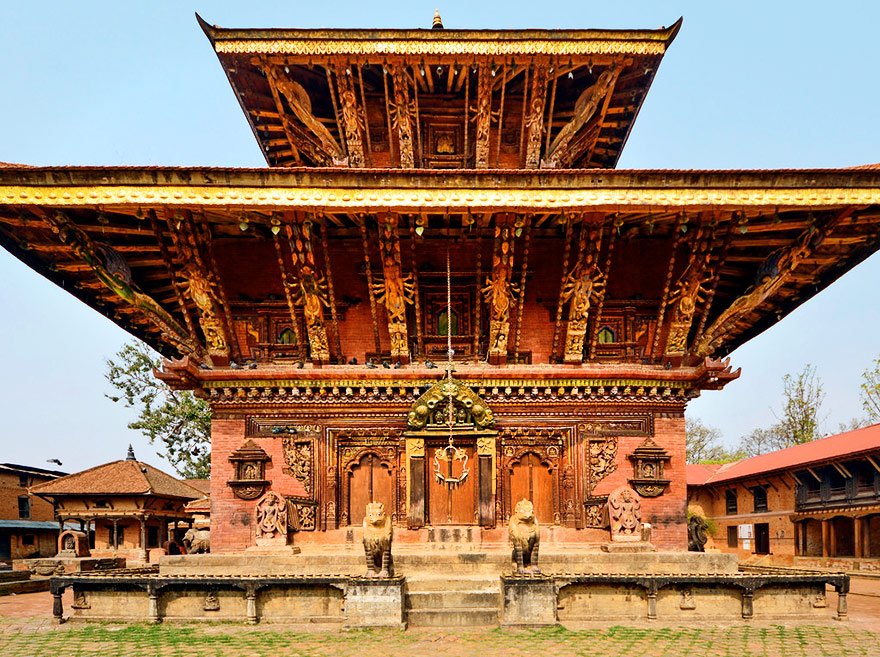
The beautiful and historic temple of Changu Narayan stands on a hilltop at the eastern end of the valley, about 6 km north of Bhaktapur and 22km from Kathmandu. It dates back to 1702 when it was rebuilt after a fire. Its origins, however, go back to the 4th century, with many stone sculptures in the premises dating to the Lichhavi period (4th to 9th centuries). Unfortunately, despite the temple’s beauty, easy access from Bhaktapur and the proximity of some fine walks nearby, it attracts relatively few visitors.
The one street of Changu village leads up from the car park past a central pilgrim shelter, water tank and Ganesha shrine before ascending past thangka and wooden mask shops to the temple entrance.
The double-roofed temple is dedicated to Vishnu in his incarnation as Narayan and is exceptionally beautiful, with intricate roof struts depicting multi-armed Tantric deities. It is fronted on the west side by a kneeling figure of Garuda said to date to the 5th century. The man-bird mount of Vishnu has a snake around his neck and kneels with hands in the Namaste position facing the temple. Stone lions guard the wonderfully gilded door, which is flanked by equally detailed gilded windows. Two pillars at the front corners carry a conch and disc, the traditional symbols of Vishnu. Non-Hindus are not allowed inside the temple itself, usually shut and open only for special occasions.
The temple’s true gems are the extraordinary, much older sculptures that dot the courtyard. Several notable images in the southwest corner, including Vishnu as Narasimha, his man-lion incarnation, disembowelling a demon. Another one shows him as Vikrantha-Vamana, the six-armed dwarf who transformed into a giant capable of crossing the universe in three steps during his defeat of king Bali. A small black slab shows a 10-headed and 10-armed Vishnu, with Ananta reclining on a serpent below to the side of these images.
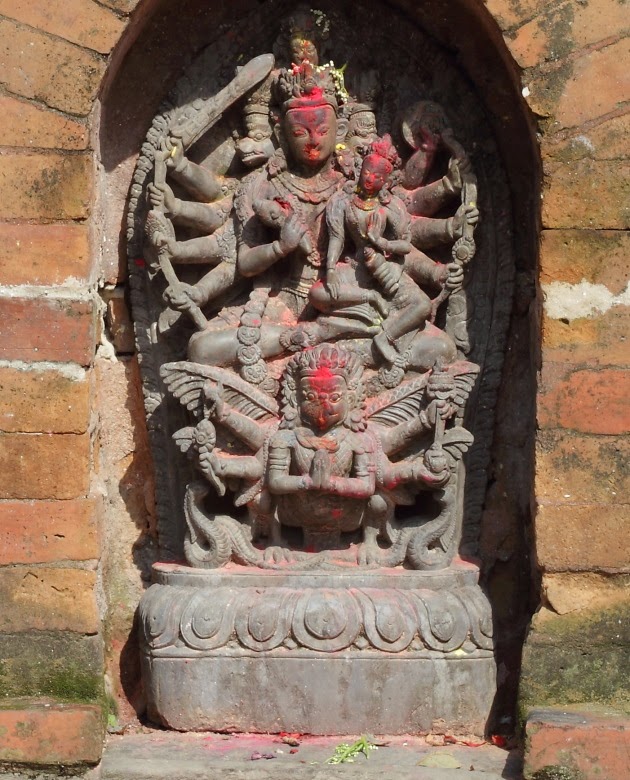
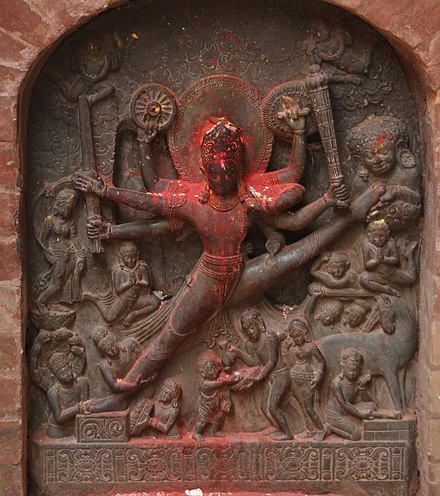
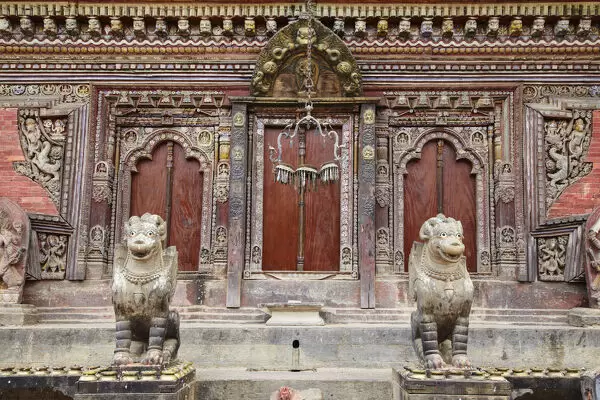
The scenes are divided into three sections – the underworld, the mortal world and the heavens. The beautifully carved image is around 1500 years old. In the northwestern corner, there is a 7th-century image of Vishnu astride the Garuda. The oldest stone inscription in the valley is in front of the Garuda figure facing the temple’s facade, dating from 464 AD. The description is in Sanskrit and describes how the king persuaded his mother not to commit sati (ritual suicide) after his father’s death. Also interesting are the statues of King Bhupatindra Malla and his queen, kneeling in a gilded cage in front of the temple. Also worth noticing is triangular bricks in the centre of the courtyard, while out towards the edges are older, rounded-corner bricks.
